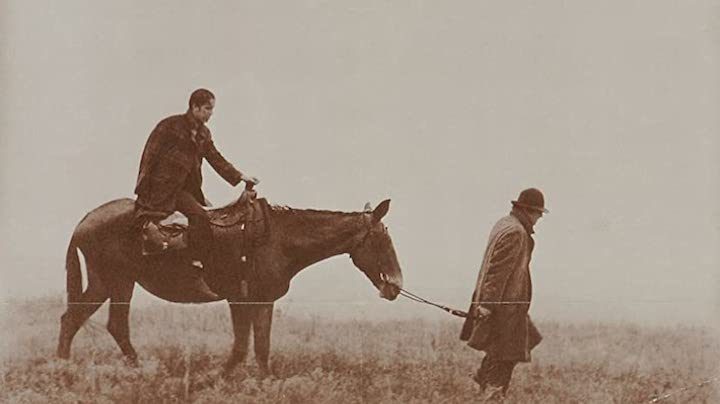
Bad Company (USA, 1972) 93 min color DIR: Robert Benton. SCR: David Newman, Robert Benton. PROD: Stanley R. Jaffe. MUSIC: Harvey Schmidt. DOP: Gordon Willis. CAST: Jeff Bridges, Barry Brown, Jim Davis, David Huddleston, John Savage, Geoffrey Lewis, Ed Lauter, John Quade, Charles Tyner. (Paramount Pictures)

Scripted by Robert Benton and David Newman (the writing team of Bonnie and Clyde), this western “buddy movie” could be called Barney and Clyde. Next to Arthur Penn’s The Missouri Breaks or Robert Altman’s McCabe & Mrs. Miller, this is possibly the darkest western I have ever seen, in terms of its photography. Not surprisingly, Gordon Willis did the cinematography, as this, like his work in The Godfather Part 2 and The Parallax View, makes an art form out of underexposed images, giving the movie a unique authenticity.
At first, this film is as muddy as its photography, as it chronicles the exploits of young men who escape the draft into the Civil War (interesting parallelism to then-present day Vietnam) by traveling west and committing petty crimes to sustain a living. As they continue their pilgrimage, so too do the central characterizations gel. Jeff Bridges is typically cast as the open-faced, big-mouthed, yet naïve macho braggart (equal parts Duane from The Last Picture Show and Lightfoot from Thunderbolt and Lightfoot), and Barry Brown is the cerebral “dude” who still clings to some moral code, even though their harsh life out west would call for anything but.
This misfit group of wannabe outlaws attempts to capture the romantic notion of the cowboy, yet experiences nothing but hardship. Indeed, the film’s running joke is that these young men keep meeting someone returning to the east! One colourful character opines, “I’ll kill the person who ever told me to go west.” In this regard, the film shares a theme with a much later Jeff Bridges western, the 2010 adaptation of True Grit: people in the old west are half crazy, and would need to be to live there.
The boys’ own journey west is equally funny and horrifying. The tone is often kept buoyant thanks to a “Peanuts” style piano score by Harvey Schmidt. An attempted stagecoach robbery results in one boy’s hopping on the coach with the passengers and riding away. Conversely, a juvenile theft of eggs from a farm suddenly erupts into gunfire and death. Willis’s photography creates the illusion that the film was only shot with available light (as did Roger Deakins’s work on the 2010 True Grit), which makes the western wilderness even more savage (nights on the prairies are pitch black; days are shades of grey). The climactic scene, where Brown meets up with a posse (led by Jim Davis, veteran of many second-feature westerns) has a feel akin to looking at historical photos. The moments one most remembers are the quiet ones, as we see the silhouetted cowboys against the landscape. The characters and the viewers are made to feel like strangers in a strange land.
